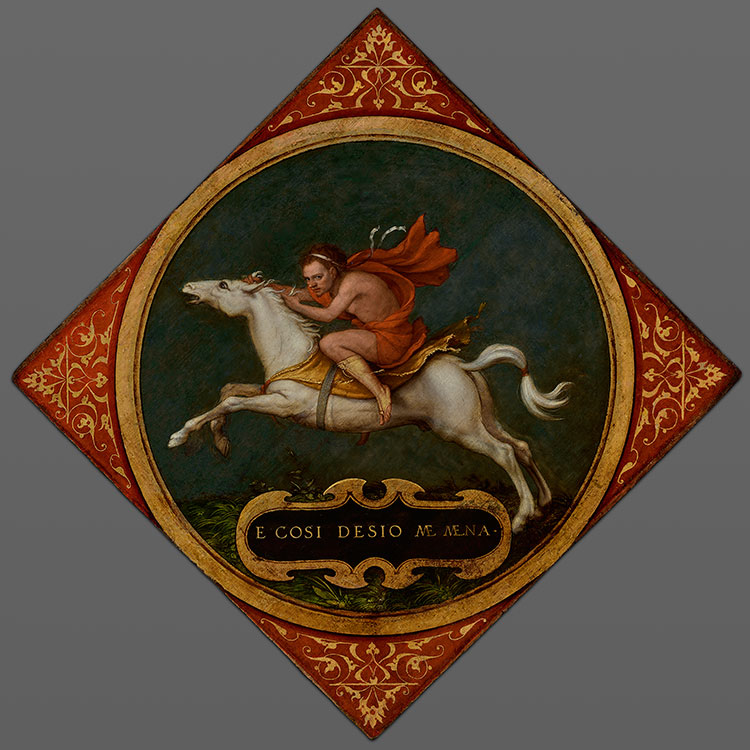
The central image of a rider astride a galloping horse embodies a lover’s quest for the heart of his beloved, as conveyed by the inscription below, taken from a work by the Italian poet Francesco Petrarch (1304–1374). Unique in Holbein’s oeuvre, the painting may have been a personal emblem or part of a series of images celebrating the theme of love. The foliate patterns are related to those Holbein used in his designs for decorative metalwork and on the book-jewel drawings for the Wyatt family. The unknown patron of the painting was likely an English courtier devoted to Petrarch’s poetry, perhaps Thomas Wyatt or Henry Howard.
Hans Holbein the Younger (1497/98–1543)
An Allegory of Passion, ca. 1532–36
Oil on panel
Inscribed on the cartouche, lower center, in Italian: And so desire carries me along (Petrarch, Il canzoniere, CXXV)
The J. Paul Getty Museum, Los Angeles; 80.PB.72
An Allegory of Passion is a rather unusual composition in Holbein’s career, both in terms of its diamond-shaped format and its allegorical subject matter. In fact, this is the only allegorical panel painting in the artist’s entire oeuvre. The rider, dressed like a lover or poet, sits astride a swiftly galloping horse, which illustrates a line from Petrarch: “And so desire carries me along.” In the Renaissance, horses had multiple meanings, as symbols of speed, virtue, and passion. The combination of the image and text indicates that the original owner of the work may have had an interest in love poetry.
Thomas Wyatt and Henry Howard both helped to popularize Petrarch’s poetry in Tudor England and developed the English sonnet—a poetic form that William Shakespeare would later immortalize. Either Wyatt or Howard, whose portraits are displayed nearby, may well have been the original owner of this Petrarchan allegory. The foliate decoration in the four corners is reminiscent of the metalwork designs Holbein produced, including the book-jewel design for Wyatt, on view nearby.
Recent scientific analysis of the painting has revealed layers of underdrawing and changes Holbein made to the composition, including altering the rider’s head from profile to the three-quarter position and changing the position of the horse’s legs. Some of the underdrawing may still be seen on the horse’s neck and highlighting the musculature of its legs.
